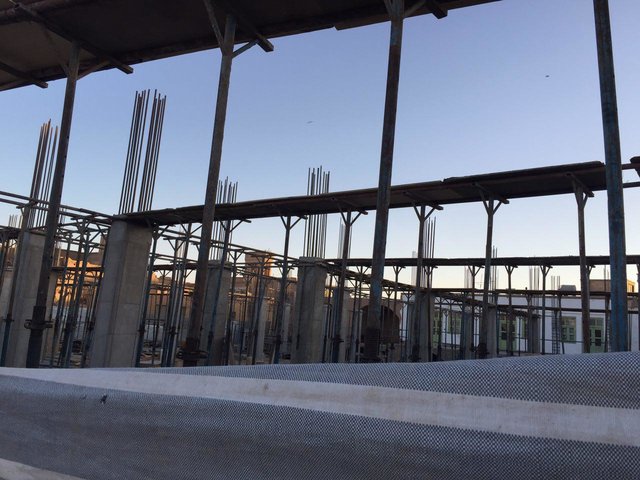The construction of a concrete building, which is currently underway in the buffer zone of the historical texture of Yazd, the capital of Yazd Province, has raised concerns that the city might lose its world heritage status.
The historical city of Yazd in central Iran became the country's 22nd world heritage site after the World Heritage Committee voted in favor of its inscription on July 9 during the committee's 41st session in Krakow, Poland.
However, cultural heritage activists have voiced concern about the gross heterogeneity of the concrete building, whose construction started a couple of weeks ago, ISNA reported.
"The building has been erected on the site of an old garage and is apparently meant to serve as a commercial center," said Amir Taqinejad, a resident.
"A concrete multi-floor commercial center is inharmonious with the historical adobe architecture of the city and will likely to lead to the site's elimination from the UNESCO list."
Reportedly, cultural heritage authorities have designated a buffer zone of 665 hectares, but the building is located only a few hectares from the site.
According to Fatemeh Danesh Yazdi, the head of provincial office of Iran's Cultural Heritage, Handicrafts and Tourism Organization, using concrete material throughout the historical texture of the city has been banned since its UNESCO inscription. Therefore, the construction project should be stopped or cancelled altogether.
This is while Sasha Riahi Moqaddam, the deputy head of the provincial ICHHTO, has claimed that the project had received the permits prior to the inscription and therefore must be implemented.
Yazd is now the only UNESCO-listed Iranian city where people still live. It is also believed to be the world's largest inhabited adobe city.
Experts have expressed concerns that disputes among authorities and neglect of construction problems could eventually lead to a second loss, like that of Qeshm Geopark.
Initially added to the coveted Global Geopark Network in 2006, Qeshm Geopark was dropped from the list in 2013 due to the authorities’ failure to address the site’s problems, such as underdeveloped infrastructure and unenforced environmental regulations.
It took Qeshm Geopark much effort to reclaim its global status after four years.


